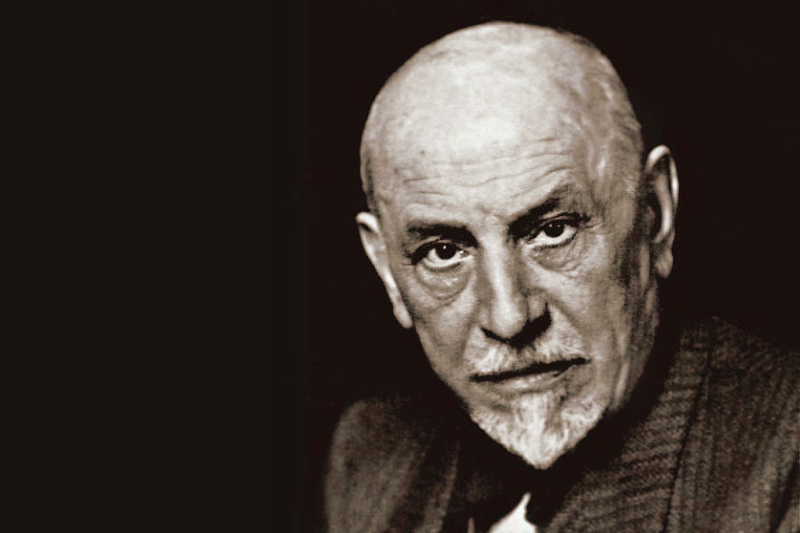Enterprise Innovation in a Transformative Society
Recent article by professors Karim Lakhani and Marco Iansiti on the Harvard Business Review, “Digital Ubiquity: How Connection, Sensors and Data are Revolutionizing Business”, gave me the opportunity for interesting insights and considerations.
 Digital technology evolution and the development of modern “Internet of Things” devices are introducing huge transformative effects within social inter-relationships and its business models. These effects can not be ignored if we want to perceive – with the right clarity and meaning – the innovation process that inevitably comes with it.
Digital technology evolution and the development of modern “Internet of Things” devices are introducing huge transformative effects within social inter-relationships and its business models. These effects can not be ignored if we want to perceive – with the right clarity and meaning – the innovation process that inevitably comes with it.
The three fundamental properties of digital technology should be remembered:
- Unlike analog signals, digital signals can be transmitted perfectly, without error. A page, an email or a data will be exactly the same when it’s generated in Sydney or in Rome;
- Digital signals can be replicated indefinitely, without any loss of the original information;
- Once the investment in the network infrastructure has been made, data can be communicated to the end users at zero marginal cost.
These properties have improved the scalability of operations, introducing a new interconnecting way among Enterprises and opening to new business models. Ultimately, these three fundamental properties have provided the necessary momentum to the transformation enabled by the “digital ubiquity” technology.
In these areas, the companies will necessarily have to rethink and revise their concepts and market models, identifying new opportunities to compete in an increasingly transformative society.
The industrial model emerged and developed in the last century can no longer be applied without changing the borders. The largest and most flourishing industrial examples of success in the Italian history (such as Olivetti, Breda, the early years of FIAT and Agusta) have shown that their success key was the participation, the sense of belonging of human resources in a large joint project, the sharing of the business objective.
In the times of the digital ubiquity, the model will have to be revised and raised to a higher rung of visibility: the companies themselves will have to achieve a sense of belonging to a wider transformative society, where the boundaries should be overcome in the common goal of a global sustainable economy.
In other words, the closed model of the company wrapped on itself with the sole objective to increase profits, is proving dangerously at risk. The new approach to digital society will see the development of modern models of inter-business relationships: the innovation, the connection of the stakeholders and the identification of new business. The model should be the product of an approach that necessarily transcends the boundaries of the company itself to find solutions that base the individual goals on a common purpose.
The apparent defeat of pragmatism urges companies to adopt trans-paradigmatic models in search of solutions that need to take account of the other actors on the scene and to capture, from their interaction, new insights and developments.
Each Enterprise will be a piece of a complex mosaic. Whilst respecting their economic independence, each piece will fill its specific space, without overlapping or waste, contributing to building a more conscious and sustainable society.
 But to initiate a transformation process as outlined, you will first need to start the innovative action from within the company, in order to place the seeds of creativity that will subsequently germinate to the outside world. From the practical point of view, the main challenge is to ensure that the managers will change their frame of reference, introducing new methods to understand the complex dialectic of reality and overcoming the barriers of their personal expertise.
But to initiate a transformation process as outlined, you will first need to start the innovative action from within the company, in order to place the seeds of creativity that will subsequently germinate to the outside world. From the practical point of view, the main challenge is to ensure that the managers will change their frame of reference, introducing new methods to understand the complex dialectic of reality and overcoming the barriers of their personal expertise.
Any action involving a decision or a choice can be dealt with multidisciplinary, interdisciplinary or transdisciplinary approaches. While the first two may still offer a better understanding of the complexity, they remain confined in the classical rigid structure of disciplinary research, with all the limitations that this method involves (separation, reductionism, lack of innovation).
Business leaders and management structure will inevitably have to review their business paradigms expanding the vision beyond their abilities. Transdisciplinarity is the only approach able to simultaneously address the problems between two or more experts, beyond their specific disciplines, because it creates synergy and collaboration.
Successful transdisciplinary collaboration depends on how you cope with the following paradox: ask others to give their opinion considering that the opinion is unlikely to have immediate utility as an end! That is to say, stimulate their creativity and imagination. In this way, in transdisciplinary collaboration the differences represent an opportunity rather than obstacles.
One of the major problems encountered during a research process among people with different professional backgrounds is to establish a common understanding of the results and, above all, a way to reach them. One possible solution to overcome this challenge is to apply a transdisciplinary approach, that is, the knowledge generated through the solution of real life problems, which in most cases is holistic, complex and contextual.
Openness to the other – and therefore cooperation inside the company – must also be brought again to the outside in a collaboration between Enterprises, in order to obtain a true and lasting renewal and transformation process.




Pingback: Enterprise Innovation in a Transformative Society | Alessio Treglia